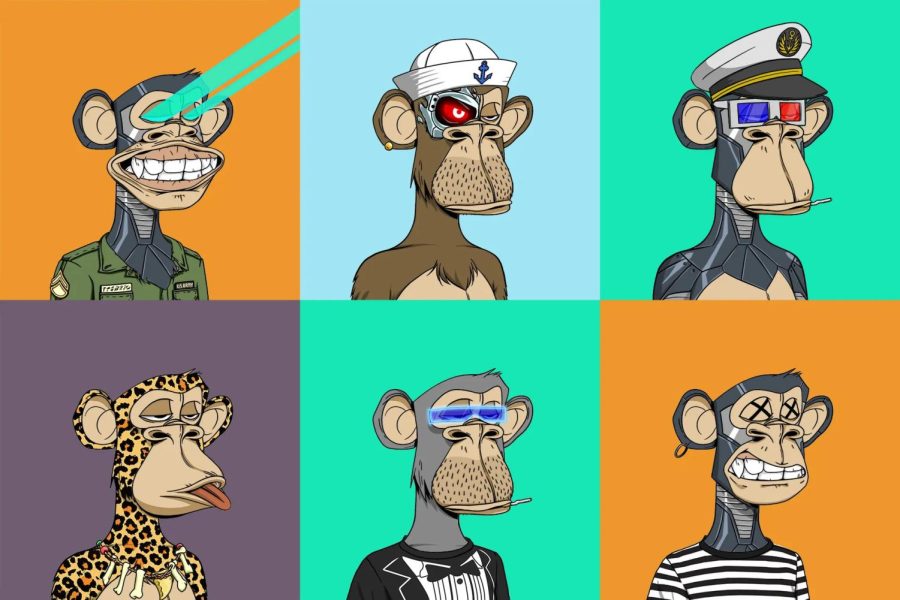The nefarious state of NFTs
A collection of Bored Ape NFTs, currently among the most popular being sold. They are can be used as avatars on social media such as Twitter
March 24, 2022
On Jan. 20, Twitter publicly announced that a new type of profile picture was now available: an NFT, which is short for non-fungible token. This is just one of many examples of companies being aware of the spread of the NFT phenomenon over the past year. However, some people, particularly many Milford students, may not even know what an NFT is.
An NFT, is essentially just a piece of data, usually in the form of a photo, video or audio file that is stored on a blockchain. A blockchain is a system involving many computers that records transactions for various purposes relating to cryptocurrency, whether it be Bitcoin, Dogecoin, or in this case, NFTs. Most NFTs are traded using the Ethereum blockchain, which raises quite a bit of concern over their environmental impacts.
The Ethereum blockchain is known for consuming a lot of energy. In fact, according to Digiconomist, the energy consumption of Ethereum was estimated to be around 50 Terra-Watt hours (TWh) per annum.
To put that into perspective, that is about as much energy as the country of Malta consumes in a given year. Although Malta may be a small country, the fact that NFTs play a large part in creating a source of energy consumption that is even at the level of a country in the first place alarms environmentalists.
Since most of the electricity that is generated comes from fossil fuels (the Canadian Association of Petroleum Producers estimates about 80%), one can see how Ethereum is reliant on the use of these fossil fuels, and thus is aiding an increase in carbon emissions and climate change.
However, it is important to state that NFTs could feasibly operate on any blockchain, preferably one that is more energy efficient. It just happens that a vast majority of NFTs are being traded on the Ethereum blockchain, and it feels like that probably will not change anytime soon.
One of the main purposes of NFTs is to allow owners to exercise control over their own work, however, in an ironic twist of events, it seems like they are allowing the opposite to happen.
OpenSea, the largest NFT marketplace in the world, goes against this, however. For instance, there have been reports from online artists such as RJ Palmer, Loish and DC Comics artist Liam Sharp saying that their work was stolen from DeviantArt and put onto OpenSea (Hyperallergic Magazine). Fortunately, for these artists, there seems to be a solution. DeviantArt placed a new measure in place last year that would scan blockchains and NFT marketplaces for stolen work, resulting in over 50 thousand alerts being sent.
However, they must file a Digital Millennium Copyright Act (DMCA) takedown request to wherever the NFT of their stolen work was being sold, such as OpenSea. This process, according to these artists, is a slow one, and the fact that these incidents happen all of the time just means that it is harder for them to deal with this stolen content. Meanwhile, the NFT in question may have already been sold, leaving the original owner with limited options. Instances of abuse are bound to happen in any system like this, but it seems like these situations of stolen content tend to occur significantly more frequently with NFTs than other forms of content, at least as of now.
The truth is that NFTs are incredibly harmful to modern society. The process used to create them helps speed up climate change, and they can, in a way, steal digital artworks from their original creators. Although the outright banning of NFTs seems to be too far of a reach, the best we can hope for is that they are more tightly regulated, whether it be stricter environmental regulations, or websites such as OpenSea keeping more of an eye on stolen content. Many companies, like Twitter, appear villainous, in a sense, for promoting NFTs, but as long as NFTs no longer actively hurt society like they currently are, that persona will easily be able to fade away.









